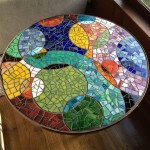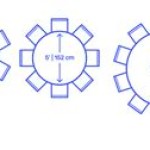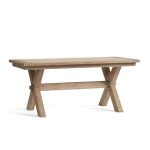How Many People Sit At A 60-Inch Round Table?
Determining the appropriate seating capacity for a 60-inch round table is a common consideration for event planners, restaurant owners, and individuals setting up dining spaces. The answer is not a definitive number, as it depends on several factors related to comfort, the type of event, and the style of seating arrangement desired. While 60-inch round tables offer versatility for various occasions, understanding the variables that influence seating arrangements is essential for optimizing space and ensuring a positive experience for guests.
The primary factor influencing seating capacity is the amount of personal space allocated per person. Crowding guests tightly around a table can lead to discomfort and impede movement, whereas providing ample space enhances the dining or conversational experience. Moreover, practical considerations, such as the size of the chairs and the presence of table settings, play a significant role in determining the ideal number of guests.
This article aims to provide a comprehensive overview of the factors affecting the seating capacity of a 60-inch round table, offering guidelines and considerations to assist in planning events and designing functional dining spaces. By exploring the variables involved, readers can make informed decisions about optimizing seating arrangements for their specific needs.
Understanding Personal Space and Comfort
The amount of personal space allotted to each guest directly impacts their overall comfort and the usability of the table. A cramped environment can restrict movement, making it difficult for individuals to comfortably eat, converse, and interact with others. Conversely, providing adequate space allows for ease of movement, enhancing the dining experience and facilitating conversation.
As a general guideline, allowing approximately 24 inches of space per person is considered comfortable. This measurement provides sufficient room for individuals to sit without feeling confined, while also accommodating standard dining etiquette. However, this measurement is not a rigid rule and may need to be adjusted based on the specific circumstances of the event.
For example, if the event involves a formal dinner with multiple courses and extensive table settings, more space may be necessary. In such cases, providing 26 to 28 inches of space per person can prevent overcrowding and ensure that guests have sufficient room for their plates, glassware, and utensils. Conversely, for more casual events, such as cocktail parties or informal gatherings, the spacing might be slightly reduced, though careful consideration should still be given to guest comfort.
Seating capacity estimates often assume that guests are seated comfortably without rubbing elbows or feeling squeezed. This assumption is based on the idea that a comfortable dining environment enhances the overall experience. Therefore, adhering to a standard of 24 inches per person, or more if space allows, is generally advisable, especially for formal events or situations where guest comfort is paramount.
Chair Size, Table Settings, and Event Type
Beyond personal space, the dimensions of the chairs and the type of table settings also influence the number of people that can comfortably sit at a 60-inch round table. Larger chairs, particularly those with arms, require more space around the table, potentially reducing the seating capacity. Similarly, elaborate table settings with multiple plates, glasses, and utensils demand more surface area per person, which can also affect the number of guests that can be accommodated.
The choice of chair style significantly impacts the overall space needed per guest. Chairs with wide bases or armrests occupy more lateral space than smaller, armless chairs. If using larger chairs, reducing the number of guests seated at the table may be necessary to prevent overcrowding. Conversely, using smaller, more compact chairs can allow for maximizing the seating capacity of the table.
Table settings are another crucial consideration. For informal gatherings, minimal table settings might suffice, consisting of a single plate, cutlery, and a glass. However, formal dinners often involve multiple courses and elaborate table settings, including charger plates, bread plates, and various glasses for different beverages. Such elaborate settings require more table space per person, thus potentially decreasing the comfortable seating capacity.
The type of event also plays a significant role. Formal events typically prioritize guest comfort and elegance, necessitating more space per person. Conversely, informal events may allow for slightly tighter seating arrangements. Understanding the nature of the event helps in making informed decisions about the optimal seating capacity, chair selection, and table setting arrangement.
For example, a wedding reception often demands a higher level of comfort and formality than a casual birthday party. In the case of a wedding, it's preferable to err on the side of providing ample space for guests to comfortably enjoy their meal and participate in the celebration. Conversely, a casual gathering may allow for slightly tighter seating arrangements without compromising the overall enjoyment of the event.
Calculating Seating Capacity Based on Table Size
While the preceding sections discuss factors influencing seating capacity, understanding how table size relates to the number of guests is crucial. A 60-inch round table has a circumference of approximately 188.5 inches (πd, where d = 60 inches). Optimally, this circumference must be divided among the number of guests in a way that allows for a reasonable amount of personal space.
Given the general guideline of 24 inches per person, a 60-inch round table can typically accommodate 7 to 8 people comfortably. This calculation is based on dividing the circumference of the table (188.5 inches) by the desired space per person (24 inches). The result is approximately 7.85, rounded to the nearest whole number, suggesting that 7 to 8 people can be comfortably seated.
However, this estimate should be viewed as a starting point, as other factors may necessitate adjustments. For example, if using larger chairs or elaborate table settings, it may be more appropriate to seat only 7 people at the table to ensure adequate space. Alternatively, in less formal settings with smaller chairs and minimal table settings, it might be possible to seat 8 people comfortably.
Furthermore, it is essential to consider the overall layout of the venue. If the tables are tightly spaced, reducing the number of guests per table might be necessary to allow for ease of movement and prevent overcrowding. Conversely, if the venue has ample space, providing more room per guest can enhance the overall comfort and experience.
In summary, while a 60-inch round table can typically accommodate 7 to 8 people based on standard spacing guidelines, the actual seating capacity should be carefully evaluated based on chair size, table settings, event type, and venue layout. Understanding these variables allows for making informed decisions and optimizing seating arrangements for any occasion.
Careful consideration of all these factors ensures a comfortable and enjoyable experience for all attendees. Practical considerations, such as access for servers and wheelchair users, should also be assessed. By understanding and implementing these guidelines, event planners and hosts can maximize the utility of their 60-inch round tables and create functional and welcoming spaces.

Professional Table Seating Guide The Chiavari Chair Company Is Now Chivari

60 Round Table Seat 8 To 10 Destination Events

60 Round Table Seat 8 To 10 Destination Events

Amish Table Size Guide What Dining Do You Need

Table Als Big Tent Events

Table Seating Capacity Contemporary Craftsman Furniture

60 Round Seats 8 10 Ppl Tesoro Event Als

60 Round Tables Seats 10 People Event Als Nyc Brooklyn

60 Round Table Seats 6 8 Mimi S Party Palace Llc

Tent Ing Information For 20 By Party Tents








